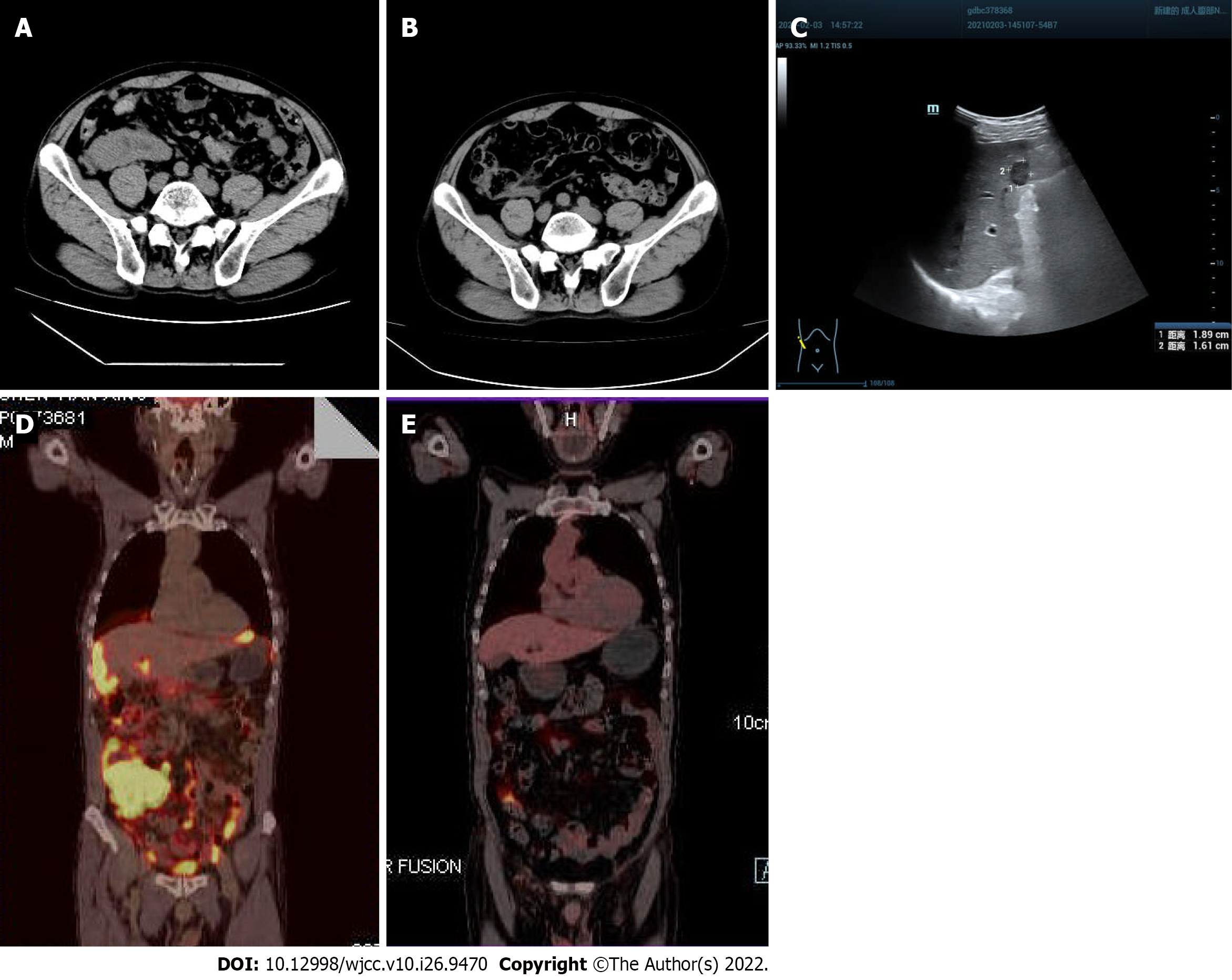Copyright
©The Author(s) 2022.
World J Clin Cases. Sep 16, 2022; 10(26): 9470-9477
Published online Sep 16, 2022. doi: 10.12998/wjcc.v10.i26.9470
Published online Sep 16, 2022. doi: 10.12998/wjcc.v10.i26.9470
Figure 1 Imaging findings.
A: On January 29, 2021, computed tomography (CT) showed multiple space-occupying lesions in the ileocecal bowel, peritoneum and omentum, and the boundary with the right psoas major muscle was unclear (red arrow); B: After 3 courses of chemotherapy, CT showed that the multiple space- occupying lesions in the ileocecal bowel, peritoneum and omentum had significantly shrunk, and the boundary with the right psoas major muscle was obvious (red arrow); C: On February 3, 2021, B-ultrasound showed a solid hypoechoic mass 1.89 cm × 1.61 cm in size with a clear boundary in the lower segment of the right anterior lobe (red arrow); D: On March 12, 2021, positron emission tomography (PET)-CT showed a soft tissue mass shadow in the liver and right lower abdomen, surrounding the ileocecal junction, with a maximum standardized uptake value of 30.3. Radioactive uptake in the hepatic capsule margin, abdominal and pelvic mesangium and omentum was significantly increased; E: On September 24, 2021, after 6 courses of chemotherapy, PET-CT showed that there was no obvious mass or increased fluorodeoxyglucose metabolism in the abdominal and pelvic peritoneal mesangium, and no obvious increased radioactive uptake in the liver (white arrow).
- Citation: Yang HJ, Wang ZM. Burkitt-like lymphoma with 11q aberration confirmed by needle biopsy of the liver: A case report. World J Clin Cases 2022; 10(26): 9470-9477
- URL: https://www.wjgnet.com/2307-8960/full/v10/i26/9470.htm
- DOI: https://dx.doi.org/10.12998/wjcc.v10.i26.9470









